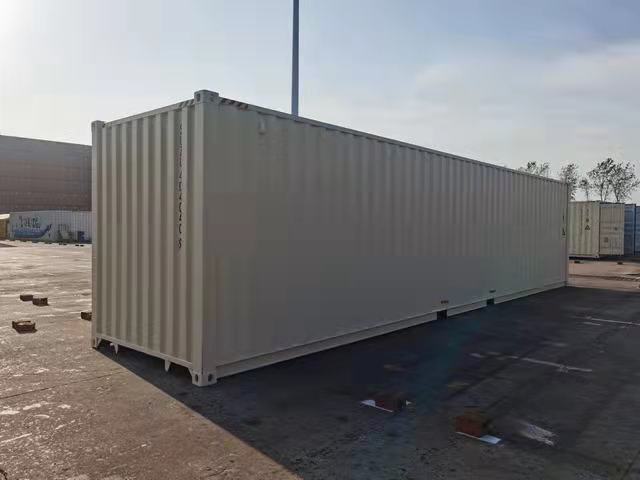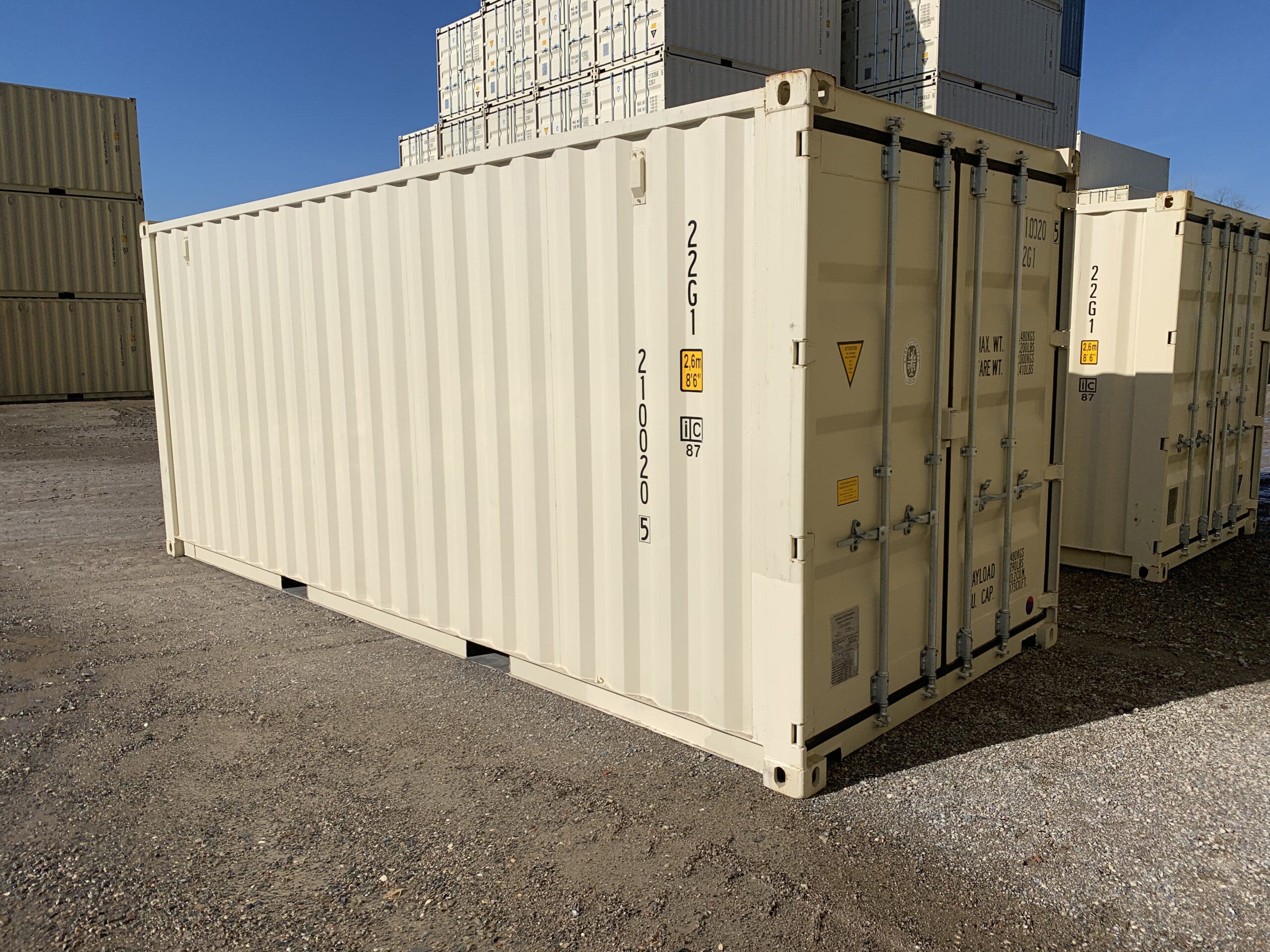The Ultimate Guide to Selecting the Right Delivery Container for Your Needs
When it involves choosing the right delivery container, comprehending your specific requirements is important. You'll desire to take into account variables like size, kind, and product to ensure you make the most effective selection. From conventional dimensions to specialized choices, there's a lot to check out. Plus, budgeting for both the container and any type of alterations can make a big distinction. Let's break down the key elements to aid you locate the best suitable for your requirements.
Recognizing Delivery Container Sizes
When you're selecting a shipping container, recognizing the various dimensions available is essential for making the ideal choice. Delivering containers usually come in typical sizes of 20 and 40 feet, but you'll likewise discover various other measurements. Knowing the dimension you need depends upon what you prepare to shop or transport.If you're relocating smaller products, a 20-foot container could be excellent, while larger deliveries usually need a 40-foot container. Keep in mind that the elevation can additionally differ; high dice containers supply additional upright room, which can be advantageous for taller goods - Lease New Shipping Container 40' x 8' x 9’6".Before determining, gauge your freight, and think about how much space you'll need for filling and dumping. Constantly consider prospective future requirements-- choosing for a somewhat larger container may conserve you trouble down the line. Eventually, choosing the ideal size will certainly improve efficiency and assure your products are secure throughout transit
Kinds Of Shipping Containers Available
There are numerous kinds of delivery containers readily available, each created for particular objectives and cargo needs. The typical completely dry container is versatile, excellent for general freight. If you're shipping perishable items, consider a chilled container, which preserves a controlled temperature level. For large items, high dice containers offer added height, suiting taller loads.If you need to move heavy equipment or equipment, level shelf containers offer a strong base without wall surfaces. At the same time, open-top containers allow for very easy loading of high cargo, with a detachable tarpaulin covering for protection. If you're trying to find flexibility, think about a retractable container that can be conveniently stored when not in use.Lastly, specialized containers like storage tank containers are made use of for fluids, while vented containers are developed for bulk freight that requires air flow. Knowing your cargo type will certainly aid you choose the right container to satisfy your delivery requires successfully.
Material Factors To Consider for Sturdiness
When picking a delivery container, the product plays a vital role in its sturdiness. You'll wish to evaluate the advantages of steel versus light weight aluminum, specifically pertaining to corrosion resistance. Understanding these factors can help you make a more educated option for your shipping needs.
Steel vs. Aluminum Containers
Exactly how do you select between steel and aluminum containers for your shipping needs? Start by considering durability. Steel containers are robust and deal superb toughness, making them ideal for heavy loads and harsh conditions. They resist damage from effects and are often less costly, which can be a major factor for budget-conscious buyers.On the various other hand, light weight aluminum containers are lightweight, which can save you on shipping expenses. They're much easier to steer and are a great option if you require to deliver items regularly. Nonetheless, aluminum is typically a lot more expensive and much less robust than steel. Evaluate your specific demands carefully, consisting of weight, expense, and the kind of freight you'll be delivery, to make the right selection for your circumstance.
Corrosion Resistance Variables
Selecting the appropriate product doesn't simply involve weight and price; corrosion resistance plays a significant function in toughness. When choosing a delivery container, consider the setting it'll face. Steel containers, while strong, can corrosion if not effectively treated. Try to find options with safety coatings or galvanization to boost their lifespan. Light weight aluminum, on the other hand, uses natural deterioration resistance, making it optimal for coastal areas or humid conditions. It can be extra expensive. In addition, assess the container's usage-- if it'll be exposed to chemicals or severe climate, prioritize materials that can hold up against these problems. Investing in a corrosion-resistant container currently can conserve you from pricey repair work or replacements down the line. Select intelligently for long-term benefits.
Alterations and Customization Options
Delivering containers aren't simply for transporting items; they can be changed to fulfill your certain requirements with different modifications and customization options. You can transform a basic container into a comfy workplace, a momentary retail shop, or perhaps a personal health club. The possibilities are nearly endless.Think about including windows, insulation, or ventilation to boost convenience. You may also take into consideration electric wiring, pipes, or also customized shelving to enhance capability. If protection's a worry, strengthened locks can offer tranquility of mind.For visual appeal, you can repaint the container or add an unique design to make it attract attention. Don't ignore floor covering options-- whether you want sturdy plywood or something extra advanced, it can elevate the space.Ultimately, customizing your delivery container to suit your demands can improve use and produce a distinct environment that shows your style.
Analyzing Your Transportation Demands
When it comes to using your modified delivery container, understanding your transport requires is essential. Start by establishing what you'll be shipping-- whether it's hefty devices, retail items, or personal things. Each kind of cargo has different demands regarding dimension, weight, and accessibility.Next, think about the range and setting of transportation. Are you delivering go to this website locally, country wide, or worldwide? This affects the container's style and functionality. If you're making use of vehicles, guarantee your container fits typical dimensions for simple loading and unloading.Additionally, consider transit conditions. Will your products require unique protection from weather condition or temperature level variations? If so, you might need insulation or air flow attributes in your container.Lastly, this post assess exactly how typically you'll be carrying goods. Regular deliveries might require a more resilient and functional container to fulfill ongoing demands. By attending to these variables, you'll be well-prepared to select the best shipping container for your demands.
Budgeting for Your Delivery Container
Establishing a budget plan for your shipping container is crucial for ensuring a smooth acquiring process. Figure out just how much you can manage to invest. Remember that costs can vary significantly based upon dimension, problem, and kind. New containers usually cost more, but made use of ones can supply considerable savings.Next, think about any additional prices you may incur, such as transportation costs, shipment charges, and modifications. If you intend to personalize the container, consider those costs too. Study various providers to compare rates and find the very best bargain that satisfies your needs.Don' t forget to consist of any type of permits or guidelines that may use to your purchase and use the container. By clearly outlining your spending plan, you'll be better prepared to make enlightened decisions, ensuring you obtain the right container without damaging the bank.
Upkeep and Take Care Of Long life
To guarantee your delivery container lasts for years, normal maintenance is crucial. Start by checking the exterior for corrosion, damages, and damage. If you detect any problems, address them instantly to protect against additional damage. Clean the container occasionally, both inside and out, to eliminate dust, debris, and wetness that can lead to corrosion.Ensure the doors seal properly and lube the hinges to stay clear of rust and sticking. If you're making use of the container for storage space, consider adding air flow to reduce moisture and mold and mildew development. For extra defense, use a rust-inhibiting paint or sealer annually.If your container's situated in a harsh environment, like seaside locations, you could need to raise maintenance regularity. Watch on redirected here the floor covering, also; any signs of wear must be fixed as soon as possible. With these straightforward steps, you'll extend the life of your shipping container significantly.
Frequently Asked Concerns
Exactly how Do I Locate a Reliable Shipping Container Provider?
To discover a trustworthy delivery container distributor, beginning by looking into on-line testimonials, asking for suggestions from good friends or sector calls, and contrasting costs. Constantly inspect their credentials and assurance they provide high quality containers that satisfy your requirements.

Can I Lease a Shipping Container Rather Than Purchasing?
Yes, you can absolutely lease a shipping container instead of buying one. Many providers offer rental options, which can save you cash and supply versatility if you only require it for a brief period.
What Permits Are Required for Container Placement?

Are Delivery Containers Weatherproof and Ideal for Outdoor Storage Space?
Yes, delivering containers are usually weatherproof, developed to withstand harsh conditions. Their durable building maintains your products protected and completely dry, making them appropriate for outside storage. Just guarantee appropriate ventilation to prevent wetness accumulation inside.
Just how Do I Transport a Delivery Container As Soon As Acquired?
